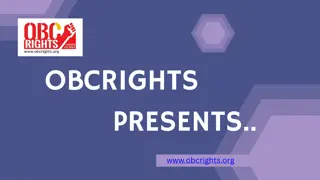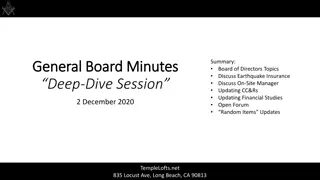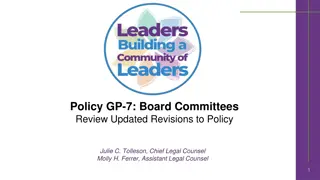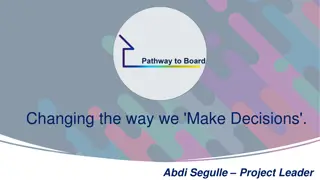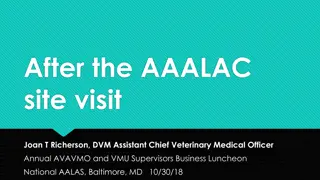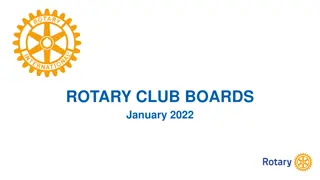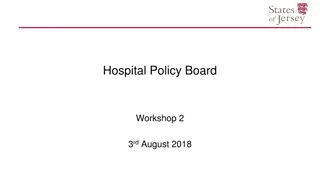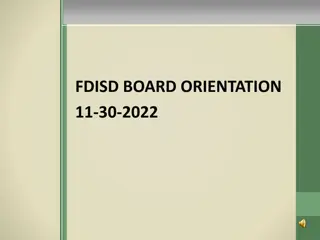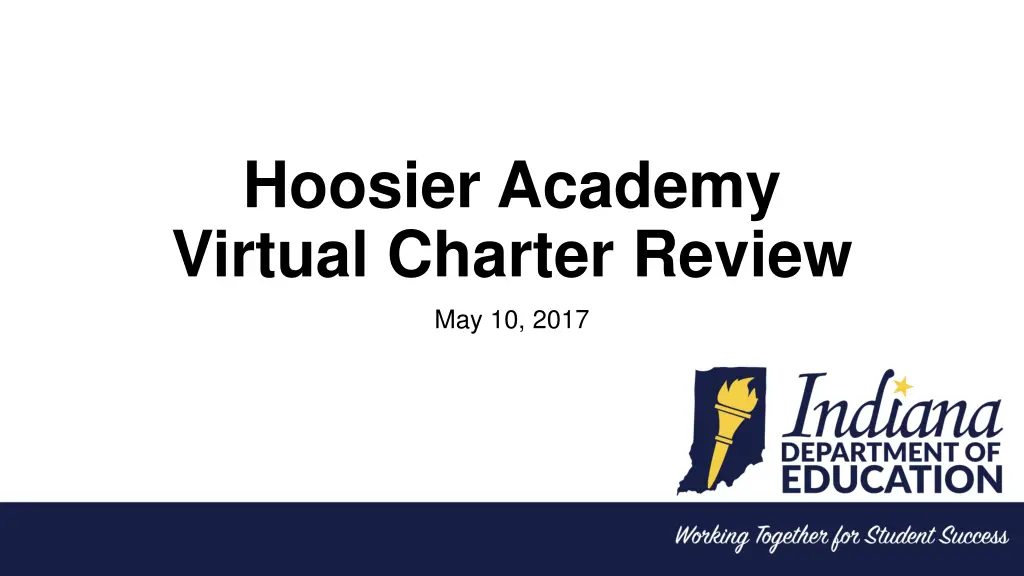
Hoosier Academy Virtual Charter Review 2017 Insights
Explore key insights from the Hoosier Academy Virtual Charter School review in May 2017, covering enrollment trends, grade distributions, cohort data, graduation rates, mobility patterns, student growth, ISTEP participation, and more.
Download Presentation

Please find below an Image/Link to download the presentation.
The content on the website is provided AS IS for your information and personal use only. It may not be sold, licensed, or shared on other websites without obtaining consent from the author. If you encounter any issues during the download, it is possible that the publisher has removed the file from their server.
You are allowed to download the files provided on this website for personal or commercial use, subject to the condition that they are used lawfully. All files are the property of their respective owners.
The content on the website is provided AS IS for your information and personal use only. It may not be sold, licensed, or shared on other websites without obtaining consent from the author.
E N D
Presentation Transcript
Hoosier Academy Virtual Charter Review May 10, 2017
HAVC Enrollment Trend 4500 4,151 3,861 4000 3,832 3500 3,342 3,342 3000 2500 2000 1853 1500 1000 500 98 204 0 2009-10 2010-11 2011-12 2012-13 2013-14 2014-15 2015-16 2016-17
HAVC Enrollment By Grade Span K-3 4th-6th 7th-8th 9th-12th Adult 4500 4 4000 25 1 3500 1462 0 55 1230 3000 1862 1367 1404 2500 947 883 2000 676 690 563 1500 805 867 596 560 1000 578 500 933 851 739 724 706 0 2012-13 2013-14 2014-15 2015-16 2016-17
Cohort Unknowns & Expulsions by Year School Year Students Categorized as Unknown in Grad Cohort Expulsions 52/223 (23%) 490 13-14 99/401 (25%) 109 14-15 131/538 (24%) 247 15-16
Graduation Rate and Non-Waiver Rate 16.36% 22.7%
Mobility Patterns New students by year with the number returning in years following.
Student Growth & ISTEP Participation 15-16 School Year ELA Math Bottom 3% Bottom 2% Growth 90.3% 92.2% Participation Grades 3-8 87.3% 85.6% Participation Grade 10
Source of New Enrollment 15-16 15-16 School Year Students not reported in an Indiana school prior to enrolling at HAVC Indiana Connections Academy Hoosier Academy Indiana Virtual School Indiana Cyber Charter School No other school accounted for more than .5% of HVA s new enrollment in 15-16. % of New Enrollment 17% 2.5% 1.7% .9% .8%
School Visit April 28 & May 1, 2017 Stakeholder Meetings Parents Teachers Support Staff Administrators Board Members Observation of Teaching
Summary of Key Challenges Highly fluid school enrollment. Alignment of K-12.com curriculum with the Indiana Academic Standards. Extensive flexibility afforded by the HAVC program/structure and the resulting uneven engagement of students with the academic program being offered. Sustained leadership and consistency of vision. Pending status of the school with regard to the renewal of the charter. Newness of this model of schooling & lack of understanding of enrollees regarding family commitment (time and effort) necessary to be successful.
Why do Families Choose HAVC? Best educational choice for their student. Flexibility the school afforded families and students who had struggled to succeed in other contexts. Academic rating of the school not the principle factor in parent choice. Students from every Indiana county.
Leadership & Governance Leadership change has been positive. Charter authorizer not wanting to lean in too much. Board looking for metrics to measure success.
Instructional Program & Curriculum Alignment of K-12.com curriculum to Indiana Academic Standards students don t benefit from work done in this area if they don t attend class or watch recorded class sessions. Families do not always understand what they are agreeing to do when they sign up. Critical role of the learning coach (often a parent or grandparent). Family Academic Success Team key intervention in place to track and address problems of engagement.
Student Performance Consistent downward trend in proficiency Very low growth Despite the trends in the aggregate, there are exceptions to these performance patterns. Students with needs Academic acceleration needs Medical needs Social needs Schedule needs
School Culture Monthly events Trying to make the state seem small Opportunities for engagement beyond traditional academics Science Fair Art Competition Prom Support for parents
Improvement Efforts Teacher development through Focused Leadership Academy. Implementation of FAST team. Plans for additional teacher leadership. Adjustments to expectations regarding participation in live lessons. Renewed efforts to onboard families no matter when they enroll. Planned addition of office hours before & after the school day. Addition of peer teaching observations.
Summary Professional staff supportive of administration s direction and vision. Lack of intervention and support by authorizer. Low performance on proficiency in Math and ELA (20 points or more below state average). Low performance on growth (bottom 2-3 %). Low participation in ISTEP+ assessment (85-92%). Low grad rate (21.7%) Non-waiver grad rate 16.36%. Extensive effort expended to address mobility and lack of engagement. $23,515,000 annual expenses reported in 2016.


